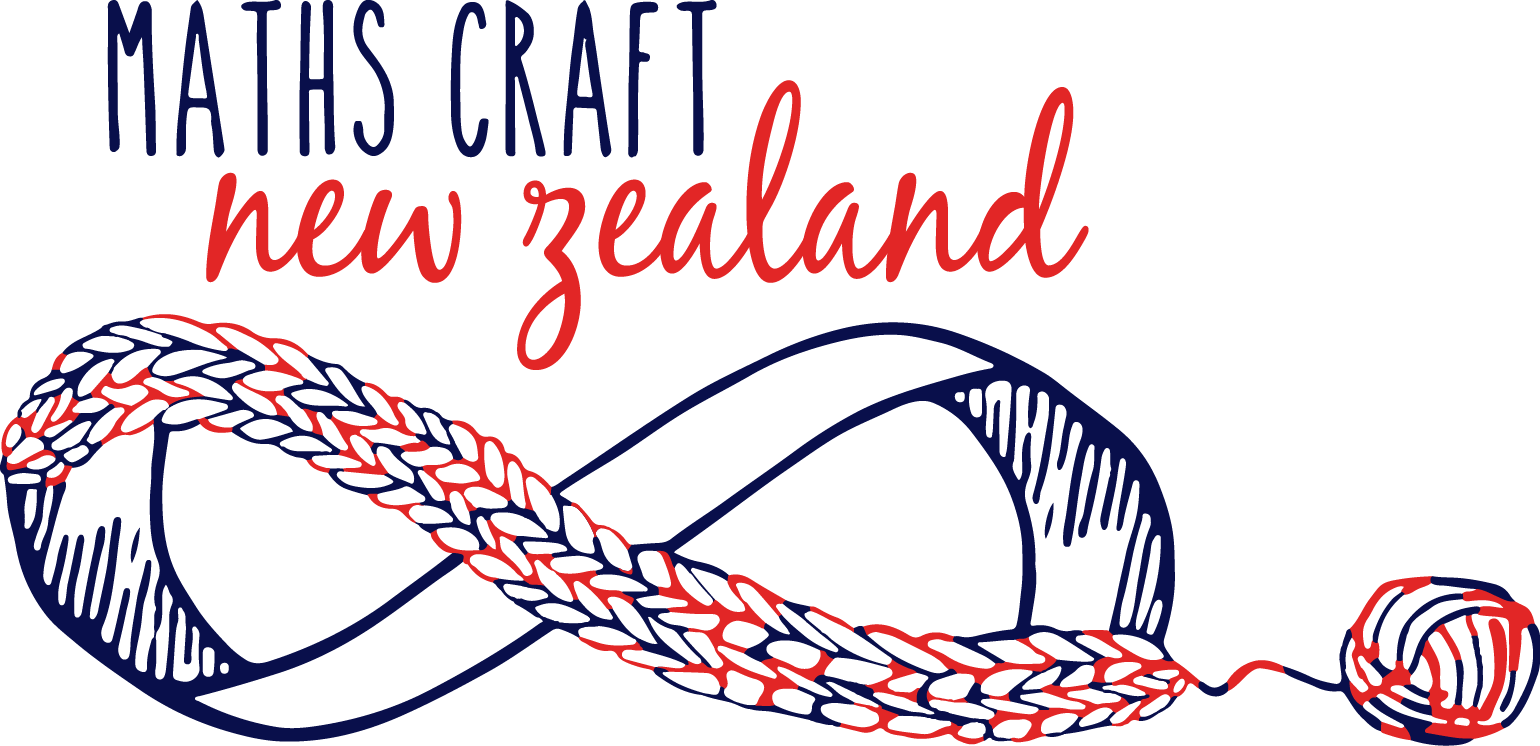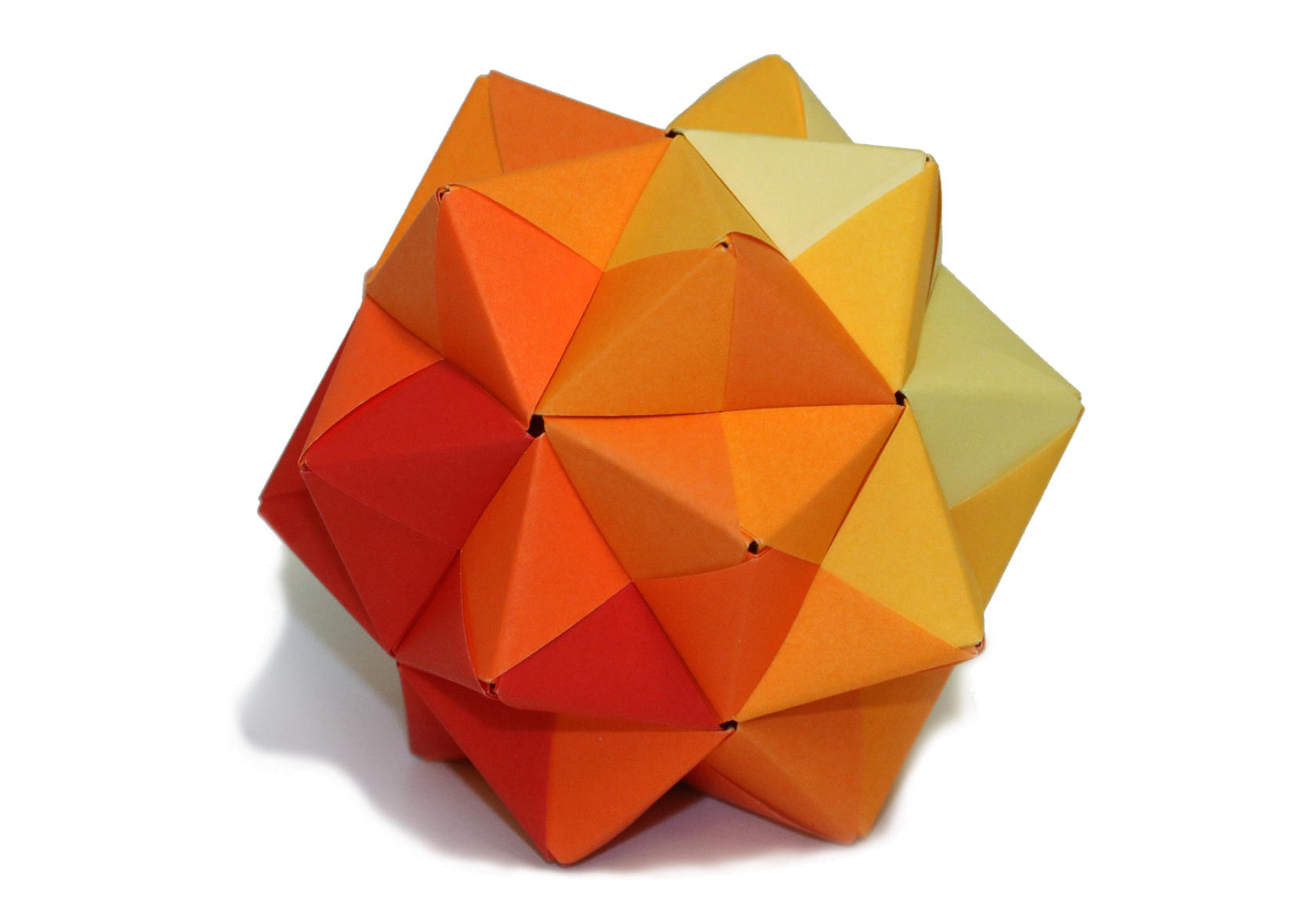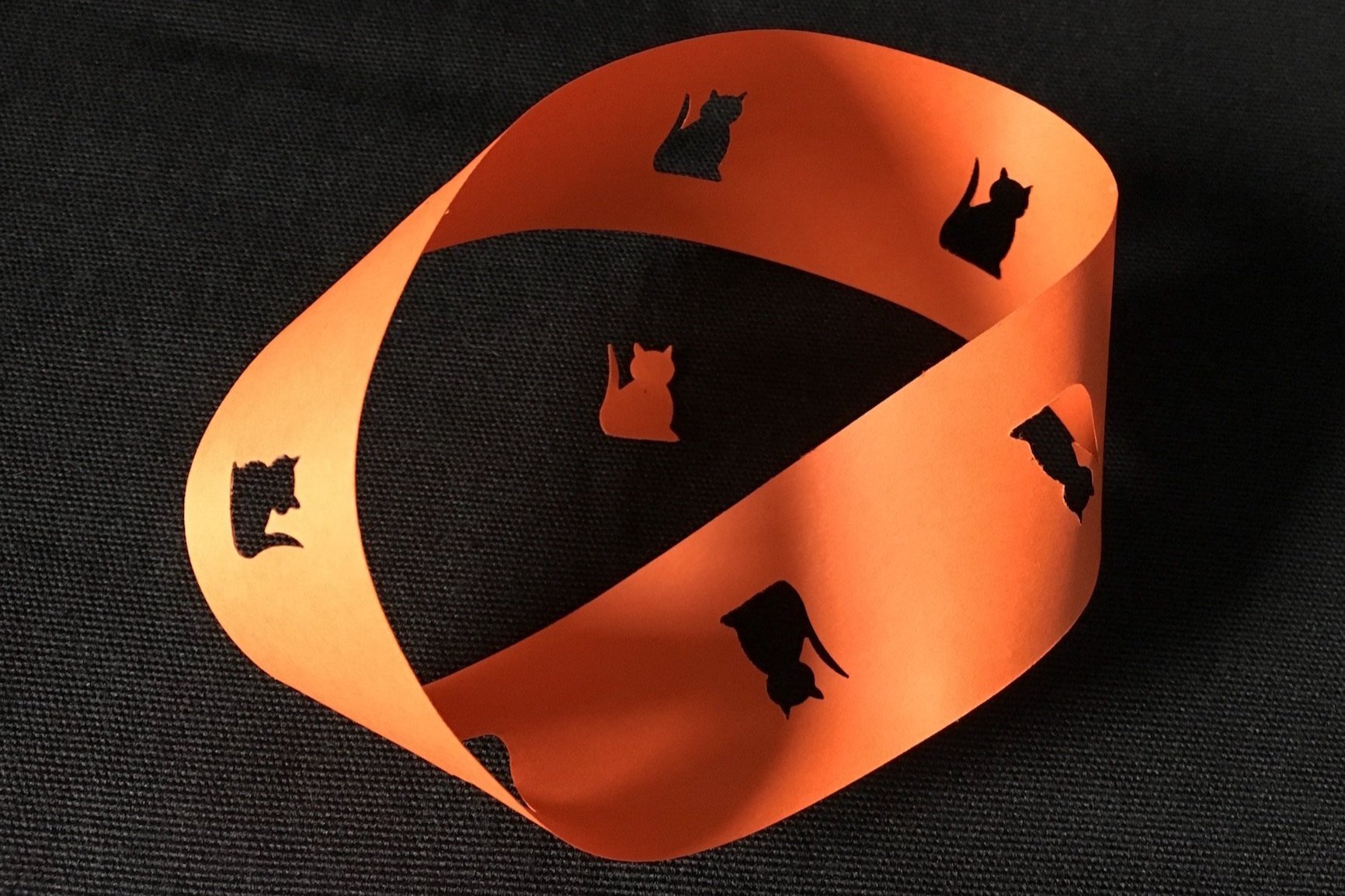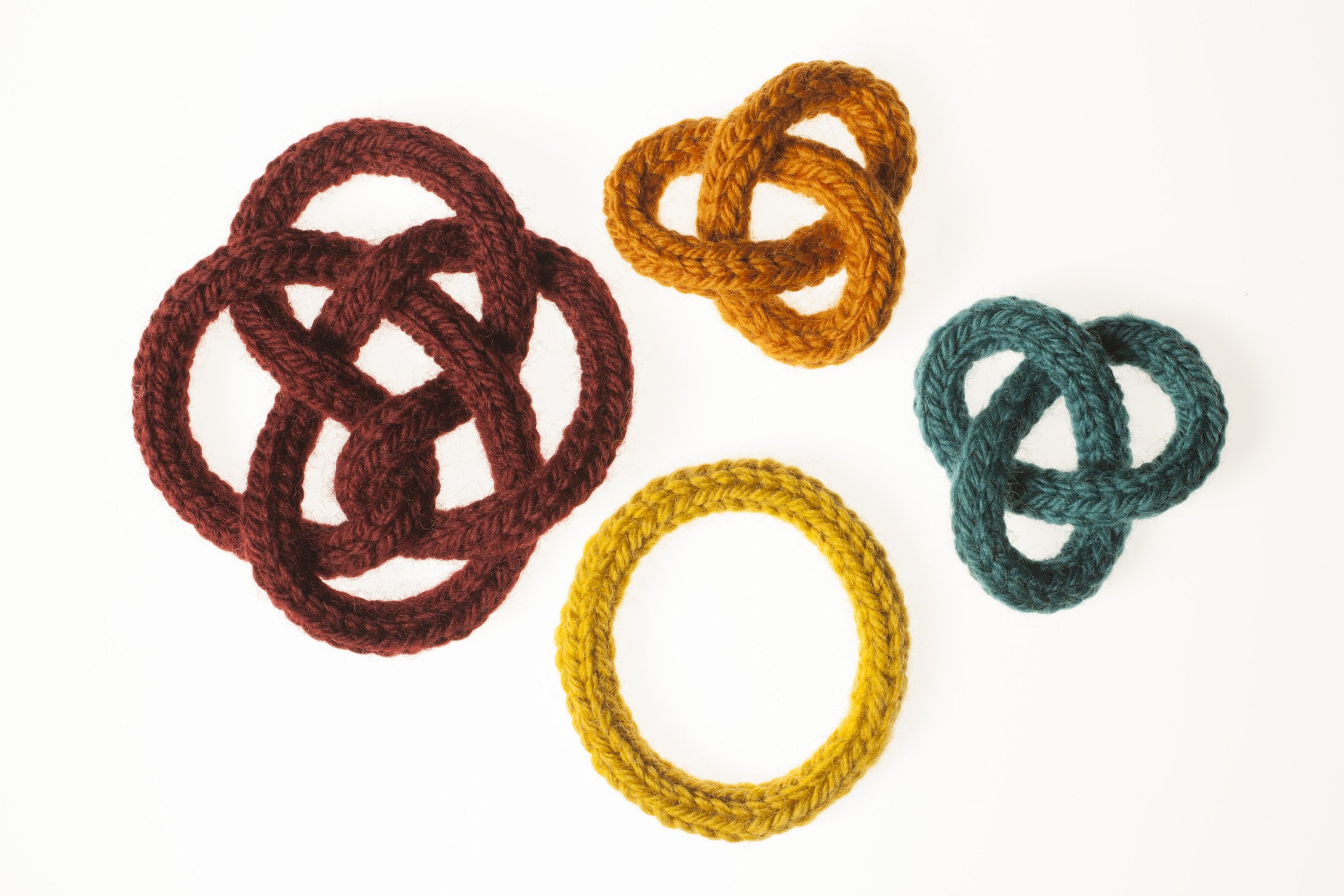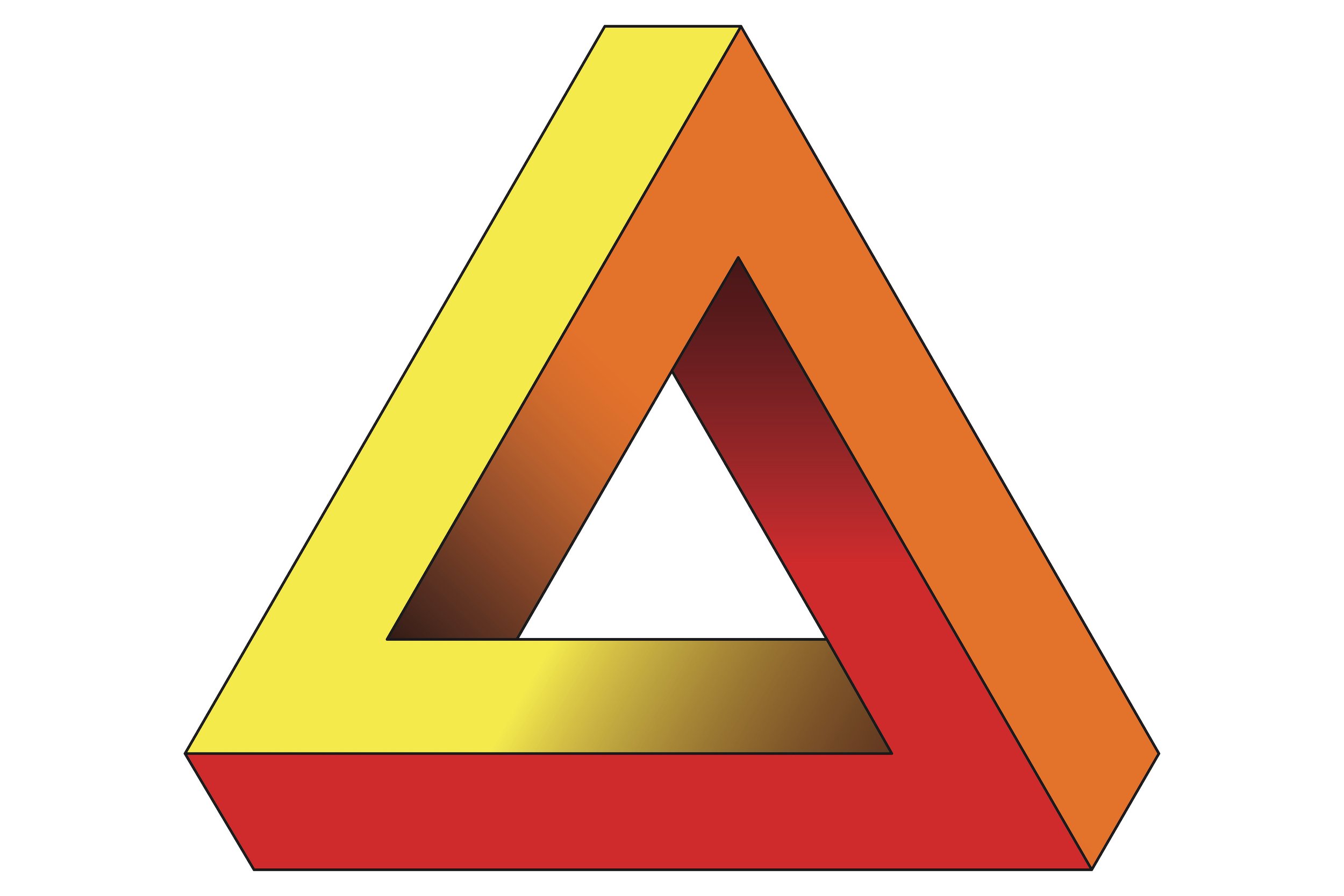Möbius Strips
A Möbius strip is a surprising object; it’s a surface with only one edge and one side. Start with our instructions for making and investigating paper Möbius strips. You can even make entwined Möbius hearts.
Are you a New Zealand maths teacher?
Something is cooking at Maths Craft! The second edition of Maths Craft in a Box is an entirely free, self-contained box dedicated to exploring the marvellous Möbius strip in the classroom. Sign up to be notified about the next release.

Menger Sponge
Fractals are mathematical objects built from repeated copies of themselves. Create a fractal sculpture from business cards. Start by making single cubes, and then assemble them into a sculpture representing a Menger Sponge. Then use our cladding to make it look like a higher-level Menger Sponge. Maths Craft have also made some instructional videos on building a Menger sponge.
Origami
Modular origami is made from simple units which are connected together to form a more complicated structure. Each unit is folded from a single piece of paper. A nice unit to start with is the Sonobe unit. These Sonobe units can then be assembled into a cube or a small triakis octahedron. Instructions and videos for assembling Sonobe units into other polyhedra can easily be found online.
Crochet
Crochet a Möbius strip using either of two different methods. Or crochet a hyperbolic plane, a surface with constant negative curvature which minimises volume while maximising surface area. Not sure how to crochet or need a reminder? Start with our handout on useful crochet stitches.
French Knitting
A mathematical knot is a length of string (or knitted tube) which is wrapped around itself, with the ends invisibly joined to form a continuous loop. Learn how to French knit a tube, then use your French knitting to make mathematical knots.
Flexagons
A flexagon is a folded paper polygon with hidden sides that are revealed when the paper is flexed. Start with the tetratetraflexagon template and instructions. Or try our trihexaflexagon template and instructions, then learn how to flex your hexaflexagon to reveal the hidden faces. Once you've mastered those flexagons, try our hexahexaflexagon template and instructions.
Colouring
We have four mathematical colouring sheets. The Four Colour Theorem is a famous and once controversial result in mathematics. You can also try your hand at colouring our curves of pursuit or Latin Square. Or you can colour and create your own mathematical colour cube. For more mathematical colouring, try this book.
Drawing
An impossible triangle is a triangular shape that can be drawn on paper but can't be constructed in three dimensions; try drawing one using our template and instructions. Or try drawing some pursuit curves using our instructions and template.
String Art
Make curves from straight lines to form intricate designs. Wrap string around card circles to make circular or heart-shaped designs . These designs can also be made by drawing lines on paper. We have instructions for drawing string art, along with a template, or drawing circular string art with a template.
Meanders
A meander is a repeated pattern or motif, usually constructed from a continuous line. In our handout, we focus on “broken” or “hook” meanders, reminiscent of intertwined spirals. These meanders can be drawn on our large and small grid templates, or on any gridded paper. Meanders are common decorative elements in ancient Greek and Roman art; there are many lovely examples of this meander on objects displayed in the Teece Museum at The Arts Centre in Christchurch.
Penrose Tiling
A Penrose tiling is a non-periodic tiling named after Sir Roger Penrose. The tiles used at some of our Maths Craft events are called the "kite" and "dart", which give an aperiodic tiling when following a simple set of rules.
Licence
All Maths Craft New Zealand handouts are available under a Creative Commons Attribution-NonCommercial-NoDerivatives 4.0 International Licence. The Maths Craft New Zealand handouts are free to be used at home or in a classroom. By using these handouts, you agree not to use the Maths Craft New Zealand branding for your own products or events, nor to package or distribute our material in any format, even if you do so for free. If you’re not sure what the license and agreement allows, please get in touch; we’d love to hear from you.

